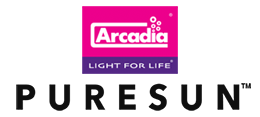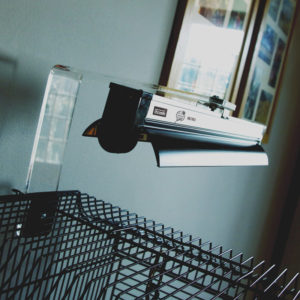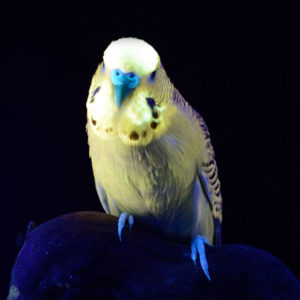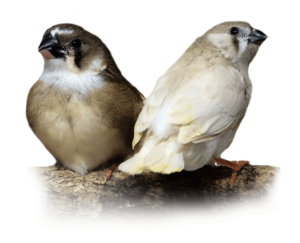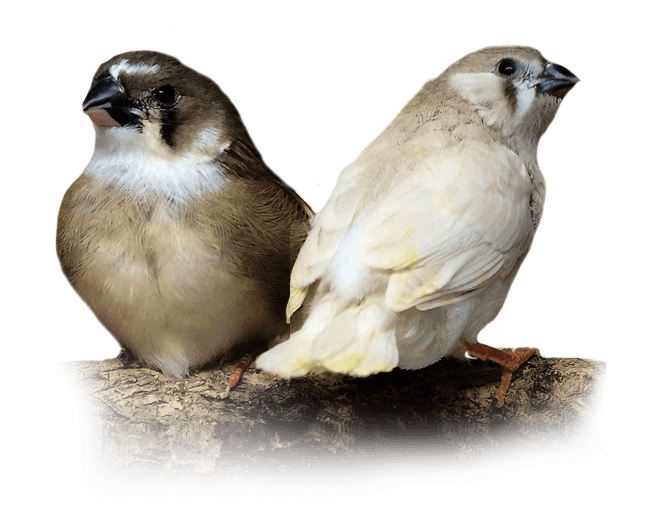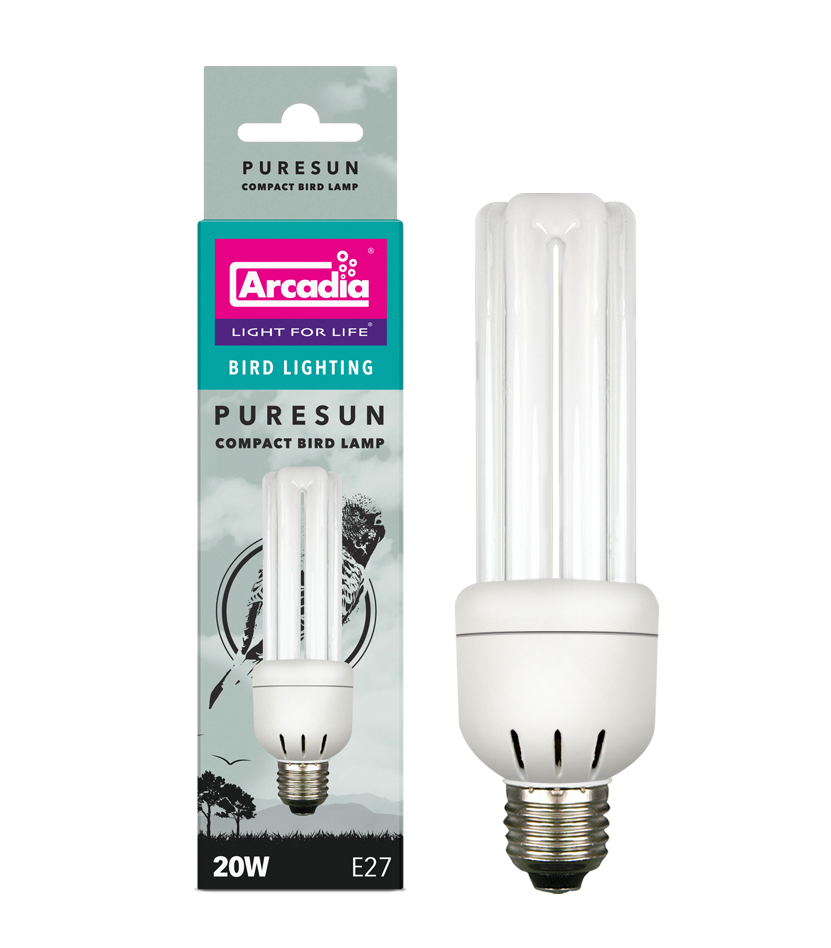
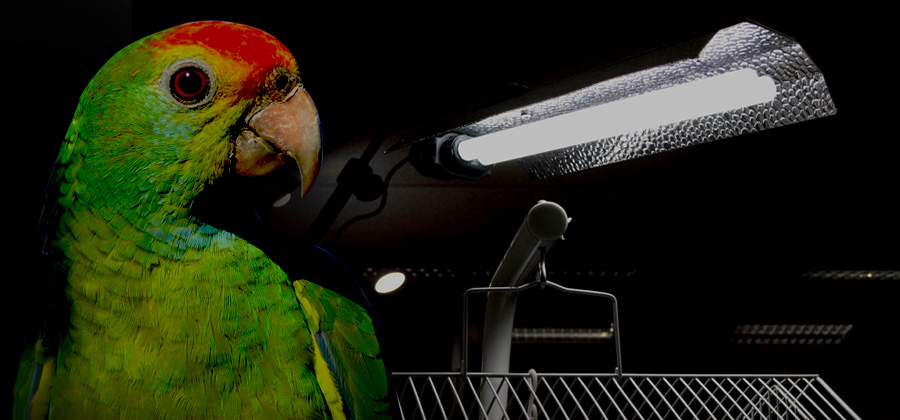
Part 4
What is light and why it so important?
Part 4 / Issue 268
Parrot Magazine / May 2020
What is light and why it so important?
In this fourth part of John Courteney-Smith’s series on light, he explains the importance of choosing the correct UV lamp in order to provide the correct amount of natural UV light depending on individual requirements
Over the past three features in this current series we have looked at the nature of Full-Spectrum+UV-B lighting for birds, its history, use and effects upon the body, be that being derived from the sun as an apex source, or via the clever replication of a modern specialist lamp. We have broken down the two terrestrial forms or ‘wavelength groups’ of ultra-violet, these being UV-A and UV-B and then looked at how each of these energy sources are used in nature.
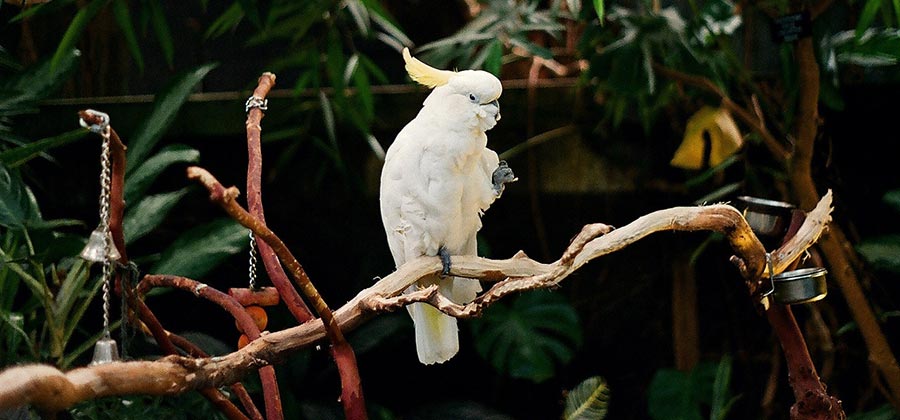
We have looked at tetrachromacy, an incredible development within the eye of certain species of animal which allows the ‘activation’ of full colour vision in birds when exposed to UV-A, and then also at the almost miraculous interactions which lead to the UV to Vitamin D3 cycle. We then explored how both wavelength groups work together to supply for life and how that both groups alone and when working in natural-balance are essential to the health and wellbeing of all birds/life.
We have also taken a brief look at some of the technology that can be utilised in order to replicate sunlight, how this can impact caged birds and indeed, we have looked at some its limitations. We then looked at the importance of the natural mineral cycles and how essential earth minerals such as Calcium and Magnesium are both gleaned and then used by the body. For most of us it is the relationship between vitamin D3 and mineral assimilation, storage and use is most important and is most well known.
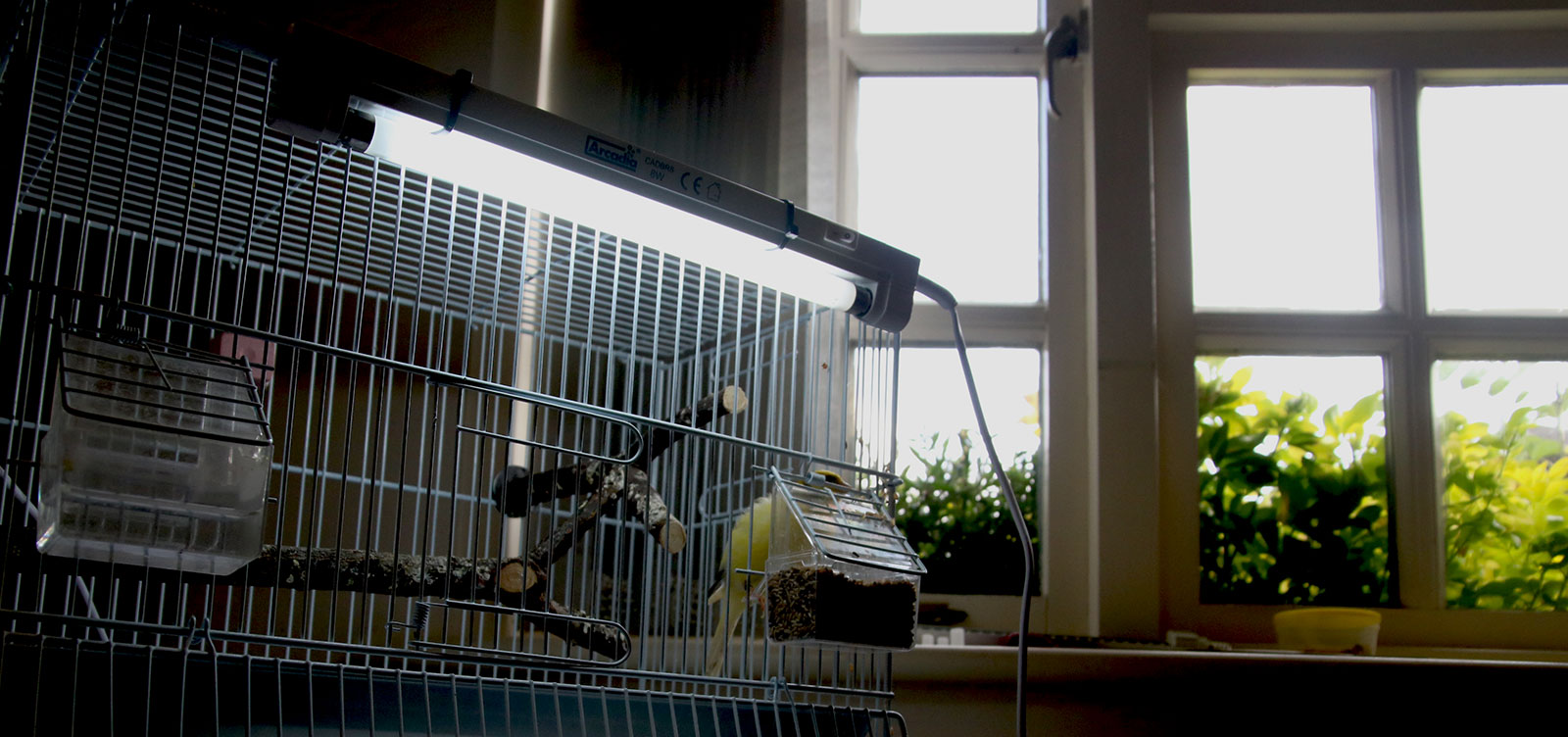
The concept that I wish as many of us as possible will take away from this in-depth review of full-spectrum+UV-B lighting for birds is, that ‘All light’ is energy. Pure, usable and essential energy. The supplier of all life within all of the terrestrial wavelengths, pouring down upon the world from the moment that the sun rises, until the time that it sets, and in a way, after that also. If we can grasp these theories and put them into place, we will see yet another positive advancement into long-term effective and ethical captive care.
We do not have to be Einstein to know that the sun has an effect on the world, all of us have felt its touch, been burned by its rays and seen our plants grow in our gardens. We all know this to be true as we have all seen it and felt it. Just because we do not ‘see’ UV-B, nor can feel the creation of D3 as it occurs in our skin, nor can we experience what it must be like to visualise the world in 100 million colours does not mean that it does not occur. There are even clever meters that can be used to measure how many units of D3 will be produced in the skin with exposure to the sun that you can carry around with you whilst travelling.

I always feel better in the sun
How many of us say each year that we cannot wait for the sun to return or ‘I always feel better in the sun’. That statement is caused by the creation of, and is one of the effects of naturally produced D3. Goodness, even the fact that rickets is caused by a lack of exposure to sunlight is taught at primary school. Why then is it so hard for some to accept that this is also true for birds? That UV has little value, that no extra lighting is required? If the sun has no effect, why do we smother ourselves in sun cream?
In this fourth part in the series I wish to cover again the differing types of lamps and how they are best used. Some easy to understand lamp fitting tips, any possible dangers, what types of minerals are best used and when we should change a lamp. Before we delve into this broad subject, I want to recap on what light actually is, what it contains and why we have limitations to technology.
Light is energy, this is the very best way of thinking about it, whether light comes from a candle, torch, the sun, a lamp or LED, in its own way, and within the spectrum attributed to a lamp, it is energy. Light is made up from countless billions of photons. If you remember back, I likened a ‘photon’ to being a particle that carries energy, energy of a certain value and within a certain ‘colour’ from the electromagnetic spectrum.
It helps those of us that are not Physics majors to visualise countless billions of tiny batteries pouring down from their source and inserting themselves into everything that they touch. Some are reflected, bouncing about until they find a ‘home’, and some are readmitted back into the atmosphere. This is energy transfer, pushing usable energy from the light source into ‘things’. Some of this energy, especially within infra-red is then stored in these ‘things’ (terrain) and is then readmitted back into the atmosphere in the longer wavelengths of IR as heat via convection and conduction.
We must understand that it is the full-spectrum of terrestrial daylight, that is the suns projection after the filtering of our layers of atmosphere that has become the provider to all life, the most bioavailable source. This encompasses all of the terrestrial wavelengths between UV-B and IR-B directly, but then also IR-C through natural secondary convection. It is this vast energy source that life has developed towards, indeed, to use in order to thrive in the wild. Therefore, this is the ultimate supplier.
We can take this a step even further of course as each species has developed over vast time within slightly different quantities of energy. Indeed, some species are almost arid within their scrubland habitats and some live in dense jungles. Each using light to provide for the same processes, but each in their own way. This does mean that we have to use the limitations and outputs of each lamp knowingly in order to provide for each species in the right way and within a quantity of energy that is usable by the bird.
The sun remains the ultimate provider! We should not shy away from this fact. However, good quality specialist lamps are now very good indeed, being very closely matched to the groups of wavelengths that allow for the creation, storage, use and recycling of D3 (the D3 action spectrum). In this way, for those of us that use the convenience and security of the birdroom, or have a beloved household pet, or do not live in the luxury of year round sun, it means that we do have a safe and effective method of providing essential energy from light to captive breeders and pets. These being specialist lamps that have been designed to project both and colour and spectrum of light in the most natural way and include adequate levels of UV.
Not all lamps are the same
It is vital that we realise that not all lamps are the same, regardless of name or marketing. It is very legal to sell ‘full-spectrum’ or ‘daylight’ lamps, be they tungsten, fluorescent or LED that do not and cannot produce nor project UV. A lamp only has to produce a colour of light that is similar to that attributed to thee colour of natural daylight (as we humans perceive it) to hold that title. What we need is to supply essential energy to the birds in a natural way. If we want birds to see their environment in natural full colour and to be able to regulate D3 production we must have adequate UV-A. If we wish for them to be able to manufacture their own Vitamin D3 in a safe and self-regulated way and to experience the benefits to both the preening gland and feathers, we must be sure of adequate UV-B provision.
We must look for lamp that produces a natural colour, has a high CRI and also displays the legal warning tringle to denote the inclusion of UV for this. These lamps are not cheap to make nor buy. They include rare earth phosphors and specialist crystal glass to be able to do this. Cheap lamps are very rarely usable lamps! They may simply not include UV or they may be of a cheaper phosphor mix or they may be unnaturally balanced, therefor not allowing natural cycles to occur or be naturally regulated.
We must cut off the rush towards LED technology for birds at the moment. Other than allowing for a natural circadian rhythm, these lamps will have no impact upon the health and wellbeing of a bird. Currently they cannot produce the natural balance of terrestrial UV at all. The tech is not advanced enough yet. It is likely to be a long time until it is. Beware LED systems for birds, they will allow you to see your bird, but they will not provide for your bird/s, they simply cannot.
Risk of sunburn and eye damage
All lamps have limitations. UV producing lamps have a few more than standard household lamps. If they are fitted too closely to a bird and without the bird being able to move away from the lamp, we risk sunburn and eye damage. Please see Dr Alan Jones very good explanation of this as featured in this very magazine. If the lamp is fitted too far away from the bird and without the bird being able to move to sit close enough to the lamp, it will be under energised and not benefitting properly. We cannot put a bird lamp in a bird room or living room and think that this will supply for the bird. Like LEDs, it will help set natural day/night rhythm and allow you as the keeper to see your bird better, but it will not/cannot impact the birds body.
As light travels from source it spreads out to cover area. The further a lamp is from its target the lower the measurable energy within that projection will be. Why?
The total output of a lamp can be thought of as 100% if all light is trapped as it leaves the lamp and measured at the glass. All of the lamps photons are hitting the same tiny area and delivering their energy. The further the lamp is from the target the wider the beam becomes. The lamp is still only producing the same amount of energy, it is just being shared out over a widening area. The same happens with bird lamps. Typically, specialist bird lamps have been designed to be fitted at approximately 10-15” above the bird’s head, (depending on lamp type), when it is sitting at the topmost perch. If we keep our lamp fitted correctly and at the correct distance, we will allow the bird to experience the energy contained within that lamp’s spectrum in a safe and effective way.
Birds of course have wings, Parrots have wings, feet and an inquisitive mind! All of which needs to be taken into account when fitting an effective lighting system. It does not matter if your bird flies or climbs closer than this 10” momentarily, they will not overexpose themselves in seconds. The danger of over exposure is very real if a bird was confined to a small cage with a lamp fitted over the whole cage and without the bird being able to move away from it.
Lamps are also cylindrical in nature, emitting light all around themselves. This means that roughly 60-70% of the energy produced by a lamp is travelling in the wrong direction! We need as much light going downwards directly onto the bird head, not up, left and right. It is therefore essential that the correct reflector is used per lamp. We need to ‘capture’ the total production of a lamp properly and push that energy downwards. All lamp types have special reflectors or dome canopies. This also reduces light overspill into the room.
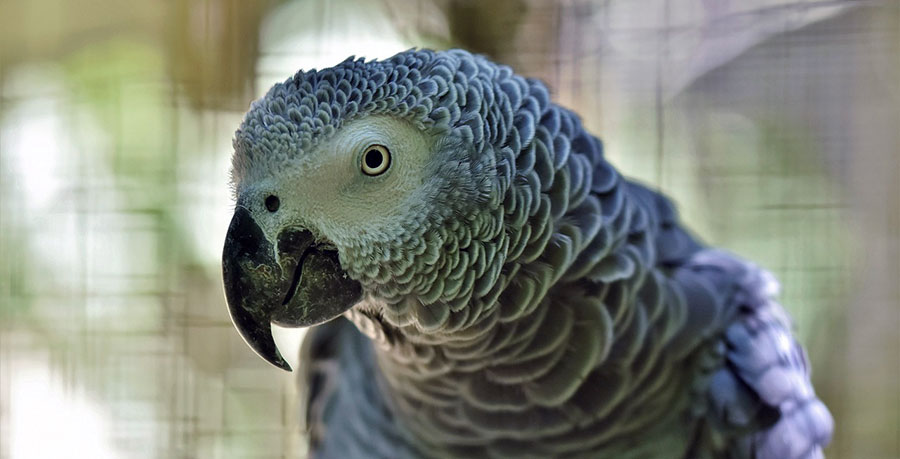
Birds must be able to self-regulate
Perches should be placed at as many locations within the cage as possible. We need to provide life with options to self-regulate. Birds, like reptiles are very good at this, taking what they need from the sun (or a lamp) and then moving on to forage. We should set up our lighting systems above the cage and then measure downwards so that the birds head, when it is sitting on this topmost perch is within the suggested range of that lamp. We can then add in perches around the cage to allow a depreciation of energy.
Typically, we only provide full-spectrum+UV-B lighting to a portion of a cage, allowing a usable drop off into shade. This can be horizontally or vertically or both per cage. As long as the bird or birds have access to a projection of light that covers the whole body at the top the basking zone and they can move from it if and when they wish. For some of us this may mean lighting a half to two thirds of a cage so that there is a horizontal gradient to shade. For others of us with tall narrow cages this can be descending into shade vertically, where the top section of perches are bright and energy rich, and the lower are shaded.
Here are some examples; a pet budgie kept in a wire cage that is 18” wide and 2’ high and 18” deep could be provided with an 8w 12” lamp. This will light almost all of the width of the cage but will offer shade towards the bottom. A keeper with one or a pair of large Macaws in a cage that is 6’ tall and 6’ wide would use a 4’ 54w T5 linear lamp, probably two of them to increase the width of projection. The lamps footprint would cover both birds as they bask, but 2’ of the width of the cage would offer a graduation to shade as would its depth. A pet owner with an African Grey living in a cage that is 3’ wide and 4’ tall could use an E27 compact lamp or 24w Power compact (ParrotPro). Both would provide well and allow natural self-regulation, with an adequate drop off into shade.
A lovebird breeder who uses wire or wooden cabinet cages would typically affix either 8w breeding kits to the front of each cage, or 54w 4’ kits along a twin or triple. If fitted outside of the cage to the wire and at the top, this will provide usable energy at the front top half of the cage and a depreciation into shade towards the back and bottom. Can you see how we can attune the system to the needs of the bird and the type of cage that it lives in.
There are six common forms of specialist bird lamp
- Standard output T8 or SO-T8. This is the where it all began in 1999. Low output gentle linear lamps that are 1” in diameter. These have a slow flicker rate when used with magnetic ballasts. Digital ballasts should be used to eliminate this. T8 is great for fitting over flights or fixing to banks of small breeding cages. It is proven effective and gentle.
- Standard output T5 or SO-T5. These thinner lamps, just five eighths of an inch in diameter draw only 8watt and are 12” long. These are included in 12” breeder kits, easy to fit to rows of breeding cages for small species and in a kit that is placed over small pet species cages. Both are usually flicker free.
- E27 Compact. These are flicker free screw in lamps with internal digital ballasts. They are very easy to use and fit above a cage. The hobby has been beset with quality issue with these lamps over the years and has seen a couple of designs. Certainly the most recent design has been totally upgraded and uses a ‘3 linear loop’ glass configuration to increase glass area. Beware cheap lamps and those that use a spiral design.
- High Output T5 or HO-T5. This is the latest technology. T5 lamps are five eights of an inch in diameter, slim and easy to hide away. Care should be taken as per point 2, they are available in standard output and high output. HO-T5 lamps are flicker free and produce roughly twice the amount of light per watt used than T8. This means more photons per watt and a greater reach for UV. They are brighter and more powerful. Perfect for use over flights and larger cages. The latest HO-T5 linear bird lamp is only available at the moment is 54w 46”.
- High output T5 power compacts. These use the tech from point 4 but in a shorter format and with two tubes fitted into a lampholder side by side. They are crisp and bright and can be fitted into a ‘flood’ type reflector. ParrotPro is an example of this type of lamp.
- Zoological. These are multi lamp fittings using the lamps above buy in arrays for larger free flights or cages. They are not typically available to private keepers unless they are lucky enough to have suitable species within suitable flights.
Fit lamps above the bird’s head
Bird lamps should always and only ever be fitted above the bird’s head. A light source shining into the side of the cage into the eye is an unnatural form of lighting. It increases the risk of glare related discomfort and damage. This is even more problematic with lamps that produce UV as this can cause scarring on the eye and lasting damage. Remember, the sun is above us, so should our bird lamps.
Cages should be kept away from direct sun exposure through the window. Birds like to look outside but as we have already seen in this series UV does not pass through the glass. Infra-Red does however. Placing a bird too close to the window greatly increases the risk of overheating.
As we have seen, adequate D3 allows the assimilation, storage and use of the earth’s minerals. It is therefore best to provide these minerals in balance and from a natural source, rather than being a lab mixed approximation of what we think a bird might use per day. Natural clay-based powders and Calcium/Magnesium powder mixes are available.
Good quality specialist bird lamps need to be changed every year. Why? The expensive phosphors that produce the balance of UV that the birds need simply wear out before the phosphors that produce visible light do. This happens slowly and over time. A bird lamp will still be bright after this time, but the UV component will have reduced, usually by 20-30% of the lamps original output. Therefore, we must provide our birds with illumination for a full photoperiod each day of 8-12 hours and change the lamp once every 12 months.
What about risks to humans? These lamps replicate gentle natural sun early in the morning. Typically, this occurs at 10-12” from the lamp. Humans should not deliberately expose themselves to these lamps, they are not tanning lamps. We should sit outside of the direct projection of light and at 18” or more away. As we have seen, the further that this light travels the less energy is available over a small area. Typically at 24”+ no UV can be measured from specialist bird lamps. Bird lamps should be switched off before cage cleaning or interaction occurs as part of good housekeeping. For those of us on certain medications that make us more sensitive to sunlight, the advice of a doctor is required. This may mean simply covering the arms when removing the bird from the cage. All in all, the advantages of providing this energy far outweigh the risks and the risks are only problematic if the technology is improperly used.
In the fifth and final part of the series we will look at a real life case where I offered advice to a bird keeper with a problematic parrot.
John Courteney-Smith MRSB
